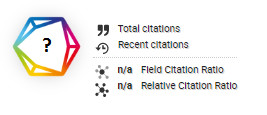IDENTIFYING STUDENTS’ ACADEMIC ACHIEVEMENT AND PERSONALITY TYPES WITH NAIVE BAYES CLASSIFICATION
DOI:
https://doi.org/10.46984/sebatik.v22i2.309Keywords:
MBTI, Naïve Bayes Classifier, Machine learningAbstract
MBTI Psychometry is the science of psychological measurement comprised of 4 opposite dimensions, namely energy orientation with Extrovert vs. Introvert, the way to manage information by sensing and Intuition, Dimensions of drawing conclusions & decisions: Thinking (T) vs. Feeling (F), and Dimensions of lifestyle: Judging (J) vs. Perceiving (P) . Students’ length of study is mainly influenced by both external and internal factors of the students’ individual. It is possible to measure the internal aspect of students by psychometric measurements. In addition, it is also viable to determine students’ study pattern with Machine learning technology to reveal the two factors influencing the students’ length of study. This study uses some of the students’ attributes including GPA, and the results of the 4-dimensional measurement based on passed courses and active courses. Samples were collected from students of the academic year of 2014 comprised of 63 students from the Psychological Department and 28 students from Informatics Engineering Department. The training data taken were 63 samples and the testing data were 28. In this study, the training data were used to establish the study pattern of students based on personality types. This study uses the Naïve Bayes Classifier algorithm to classify 63 training data with the value of Correctly Classified Instances of 82,53%. The 28 testing data with Correct Classified Instances amounted to 96.4286%. The test method is equipped with cross-validation of 8 folds resulting in the percentage of 80.95%.
References
Wandrial, S. (2014). Universitas Bina Nusantara Dengan Menggunakan Myers-Briggs Type Indicator ( Mbti ), 5(1), 344–354.
Wandrial, S. (2015). THE RELATIONSHIP OF MBTI AND STUDENT GPA SCORE IN BINUS MANAGEMENT CLASS 2015, (9), 103–112.
Mulyati, S., Setiani, N., & Gusniarti, U. (2018). Jurnal Rabit, 116–124.
Myers, MH, McCaulley, NL Quenk. 1999. MBTI Manual: A Guide to the Development and Use of the Myers-Briggs Type Indicator. Consulting Psychologists Press, Incorporated.
Downloads
Published
How to Cite
Issue
Section
License
Authors retain all their rights to the published works, such as (but not limited to) the following rights; Copyright and other proprietary rights relating to the article, such as patent rights, The right to use the substance of the article in own future works, including lectures and books, The right to reproduce the article for own purposes, The right to self-archive the article









